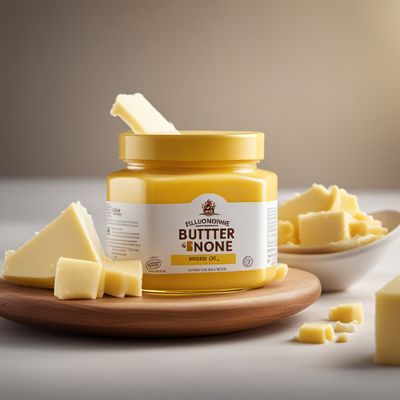
Ingredient
Blended fat and oils
The Harmonious Fusion of Fats and Oils
Blended fat and oils are a carefully crafted mixture of different fats and oils, resulting in a product that combines the best qualities of each component. This blend often includes oils such as olive, canola, or sunflower, along with fats like butter or lard. The result is a product that offers a balance of flavors, enhanced richness, and improved cooking properties. Blended fat and oils have a smooth and creamy texture, making them easy to incorporate into various recipes. They can be found in both solid and liquid forms, depending on the specific blend and its intended use. The appearance of blended fat and oils can vary, ranging from a pale yellow to a creamy white color.
Origins and history
The practice of blending different fats and oils dates back centuries, with various cultures and cuisines incorporating this technique into their culinary traditions. The exact origin of blended fat and oils is difficult to trace, as it has been used in different forms across different regions. However, the concept of combining fats and oils to create a more versatile and flavorful ingredient has been embraced by chefs and home cooks alike. This technique allows for the customization of flavors and textures, resulting in a wide range of blended fat and oil products available today.
Nutritional information
Blended fat and oils provide a good source of healthy fats, including monounsaturated and polyunsaturated fats. They are also a source of essential fatty acids and fat-soluble vitamins. The exact nutritional composition may vary depending on the specific blend and brand.
Allergens
Blended fat and oils may contain allergens such as milk (in the case of butter-based blends) or soy (in the case of certain oil blends). It is important to check the label for allergen information before consuming.
How to select
When selecting blended fat and oils, look for products that are made with high-quality ingredients. Check the label for the specific types of fats and oils used in the blend. Opt for blends that are free from artificial additives or preservatives. Additionally, consider the intended use of the blended fat and oils and choose a product that suits your cooking needs, whether it be for baking, sautéing, or spreading.
Storage recommendations
Blended fat and oils should be stored in a cool, dark place to maintain their freshness and quality. If the product is in solid form, it can be kept in the refrigerator to prolong its shelf life. It is important to follow the manufacturer's instructions for storage and shelf life.
How to produce
Blending fats and oils to create a customized blend can be done at home by combining melted butter or lard with your preferred oil(s). The ratio of fats to oils can be adjusted according to personal preference. It is important to ensure that the fats and oils are well-mixed to achieve a homogeneous blend.
Preparation tips
Blended fat and oils can be used in a variety of cooking techniques, including sautéing, frying, baking, and spreading. When using blended fat and oils for cooking, it is important to consider the smoke point of the specific blend. Different blends may have different smoke points, so adjust the cooking temperature accordingly. Blended fat and oils can be used as a substitute for butter or oil in recipes, adding a unique flavor and texture to dishes.
Culinary uses
Blended fat and oils are commonly used in baking, where they add richness and moisture to cakes, cookies, and pastries. They can also be used for sautéing vegetables or meats, providing a flavorful base for savory dishes. Blended fat and oils can be spread on bread or used as a topping for cooked vegetables or grilled meats, enhancing the overall taste and texture.
Availability
Blended fat and oils are widely available in grocery stores, supermarkets, and specialty food stores. They can be found in both solid and liquid forms, with various brands offering different blends and flavor profiles.
More ingredients from this category
Recipes using Blended fat and oils » Browse all

Tochitură Moldovenească
Savory Delight: Tochitură Moldovenească - A Taste of Moldovan Tradition

Anglo-Indian Spiced Pork
Savory Spices: Anglo-Indian Geera Pork

North Dakota Bison Stew
Savory Bison Stew with North Dakota Flair

Indonesian-style Laksa
Spicy and Fragrant Indonesian Laksa: A Fusion of Flavors

Rhenish-Hessian Beef Stew
Hearty Beef Stew with Rhenish-Hessian Flavors

Pomeranian Haystack
Hearty Pomeranian Haystack: A Taste of Rustic Comfort

Northern Irish Berza Malagueña
Hearty Irish Stew with a Spanish Twist

Bosnian Chicken Soup
Sarajevo Comfort: Bosnian Chicken Soup

Latvian-style Biryani
Rice Delight: Latvian-inspired Biryani

Xinjiang-style Meat Fondue
Spicy Xinjiang Meat Fondue: A Sizzling Delight from the Silk Road

Sindhi-style Salmon Tagliatelle
Savory Sindhi Salmon Pasta Delight

Bhutanese-inspired Spiced Chicken Torta
Himalayan Spiced Chicken Torta: A Fusion of Bhutanese and Nigerian Flavors
